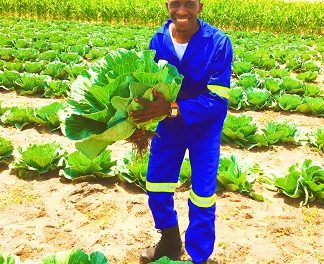
Seal hunt could be more viable
 Namibia is gaining too little from the annual seal hunt, therefore government and local entrepreneurs should come up with ways in which the country can profit from this industry, says Oswald Theart of Namibian Seal Conservation, an advocacy organisation.
Namibia is gaining too little from the annual seal hunt, therefore government and local entrepreneurs should come up with ways in which the country can profit from this industry, says Oswald Theart of Namibian Seal Conservation, an advocacy organisation.
“Seal meat has, for many years, been a palatable delicacy in Canada and Europe and it has also been consumed on a small scale in Namibia. If one takes into consideration that the Hon Minister [Benard Esau, Minister of Fisheries and Marine Resources] have allowed a total allowable catch of 85000 pups and 6000 bulls then one can agree that there is an awful lot of meat involved. “Currently this meat is utilised for pet food. The bone and meat meal on the other hand is utilised for fertiliser and animal fodder. These products do not generate a high income and Namibian Seal Conservation believes that higher capita can be gained if it is processed for meat to be consumed by human beings,” says Theart.
He added however that strict compliance to the Ministry of Health’s regulations should be adhered to.
“A few restaurant owners at the coast recently indicated that they would also like to offer seal meat on their menus. Offering seal meat on our menu’s would be no different than the current offering of Crocodile and other game meats on our menus,” said Theart.
However, other organisations such as The Seals of Nam say that because seals are apex predators their meat contain extremely high levels of mercury which is known to cause Minimatas Disease. Other toxic heavy metals such as cadmium and lead are also present in seal meat and blubber, the conservation and lobby organisation says.
“Cape Fur seals are slaughtered out in the open on the beaches of Namibia. Flies swarm over their corpses and lay thousands of eggs. The bodies of the dead seals are transported on the backs of non-refrigerated trucks to processing locations giving ample opportunity for the meat to become contaminated with disease,” said Pat Dickens, campaign manager of The Seals of Nam, in a statement.
He further said his organisation challenges those who advocate for the export and consumption of seal meat to produce health certificates clearing every seal slaughtered to be free from disease or parasites.
“We also question the sanity of any individual who wishes to promote the consumption of seal meat for human purposes,” Dickens said.
According to Dickens, the Animal Protection Act of 1962, which deals with the export of meat or meat products to prescribed countries, is being violated.
“The amendment states “Notwithstanding anything to the contrary in any law contained, no meat or meat product derived from a prescribed animal shall be exported to any prescribed country, unless such an animal was slaughtered at a prescribed abattoir.” Cape Cross, when we last checked, is a designated nature reserve and not a prescribed abattoir,” he emphasised.
Theart and his group of conservationists and environmentalists argue that although seals are regarded as predators and feed off the oceans which are highly polluted, there is no proof that this is also the case in Namibia.
“NSC is not aware that this is the case in our ocean therefore we have said that the seal meat must be tested first, and it must then comply with the prescriptions in the regulations of the Ministry of Health. Should seal meat be processed for export, then the infrastructure should comply with at least EU standards.
“This might be a costly operation seeing that the seal culling season is only four months per year. There are also 24 colonies spread along our coast and the question would be where to erect such facilities. To transport seal carcasses from the various colonies might also not be viable now but entrepreneurs are invited to come up with suggestions to overcome these problems,” Theart told the Economist.
Namibia’s annual seal harvest takes place over four months, from July to November each year. The total allowable catch currently stands at 85000 pups and 6000 bulls.












































